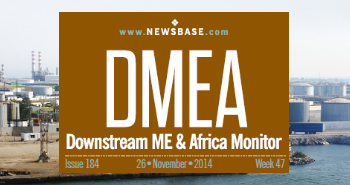NewsBase: Climate-fuelled shipping bottleneck in Panama compounds impact of Red Sea troubles
Global shipping traffic has slowed in recent weeks as a result of security problems in the Middle East, with Houthi rebel groups in Yemen firing upon vessels seeking to transit the Red Sea en route to or from the Suez Canal, and US and UK naval forces striking back.
This is not the only bottleneck facing the industry, however. Rather, it follows the emergence of another chokepoint in the Western Hemisphere, at the Panama Canal.
Under normal conditions the Panama Canal handles about 36 ships of various sizes per day. However, it began restricting traffic flows to 32 per day as of July 30, 2023, due to low rainfall during its wet season, which runs from April to November. It then began implementing more drastic cuts after the month of October recorded the lowest level of rainfall on record since 1950, slashing daily passage slots to 25 as of November 3, 2023, and announcing plans to reduce the number even further to 18 as of February 1, 2024.
In the meantime, traffic jams began to develop, with dozens of tankers, container ships and other vessels lining up at each end of the canal. The Panama Canal Authority (ACP) is allowing ships to jump the queue if they pay a premium, but some vessels have turned away to ply other routes or to seek other ports.
There is little hope of immediate relief on the horizon. The bottleneck is being driven by drought, and the shortage in rainfall has only worsened with the advent last autumn of the El Niño climate pattern, which is associated with an upsurge of warmer-than-usual water in the central and eastern sections of the Pacific Ocean in the tropics.
This shift disrupted the previous La Niña pattern, which had been in place for several years, and further delayed the arrival of seasonal rains in 2023. The resulting drought has disrupted the operation of the canal by reducing the amount of the water flows into Lake Gatun that are used to operate the locks that keep marine traffic moving. The drought is now expected to last until at least May or June.
But it’s not just the volume of the traffic that has changed since last autumn; it’s also the size of the ships involved. The drought has led ACP to lower the cap on the maximum draft of the vessels that enter the locks, as well as the number of vessels passing through the canal. As a result, the ships that do traverse the Panama Canal now tend to be less heavily loaded.
As a result, the waterway has become less attractive to long-haul tankers, which are usually loaded to capacity, and many tanker operators are opting to use other routes. This development is evident in the fact that the average auction price for Neopanamax vessels, the largest class of tanker permitted to pass through the canal, to avoid congestion and jump the queue as described above has dropped to $269,000 as of January 11. This is down from nearly $4mn as of last November, according to a Bloomberg report.
Francisco Torné of Panama-based Waypoint Port Services told the news agency that these prices had fallen because there were not many bids being made for Neopanamax vessels, a category that includes LNG carriers.
If this is true, then tankers that might under normal circumstances have passed through the Panama Canal are now plying other routes. In turn, since these routes are longer, they are more expensive and they have a greater impact on the availability of shipping capacity.
The problem is that tanker operators now face similar considerations in the area of the Red Sea and the Suez Canal. There too, they have good reasons to seek out other routes that are longer, that cost more and that keep shipping capacity off the market. As a result, the global shipping industry is being hit on two sides – in the Middle East by a security-induced bottleneck and in Latin America by a climate-fuelled bottleneck.
This article first appeared at Newsbase.com, a global energy publication that covers the major oil, gas, LNG, power and renewables developments from around the world on a daily basis. Contact sales@intellinews.com if you would like a free two week trial to Newsbase.




Follow us online